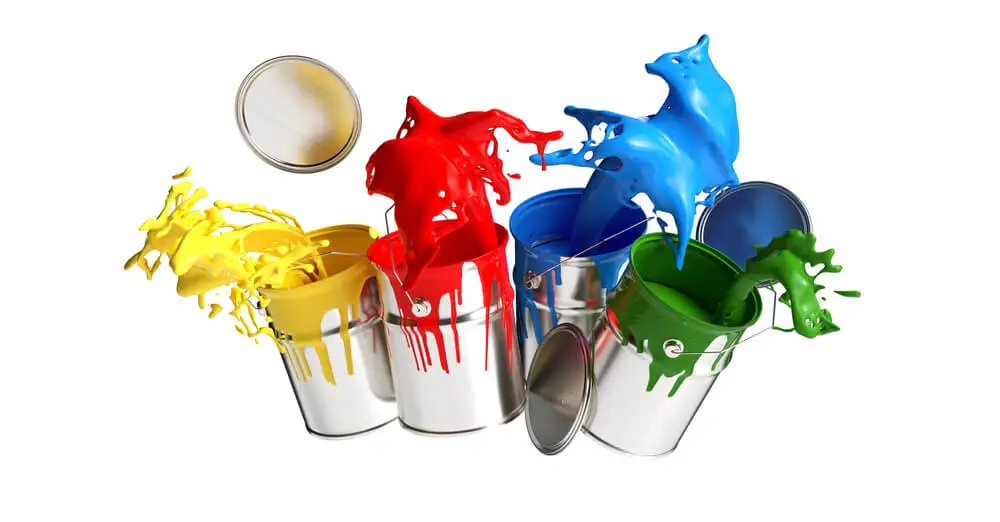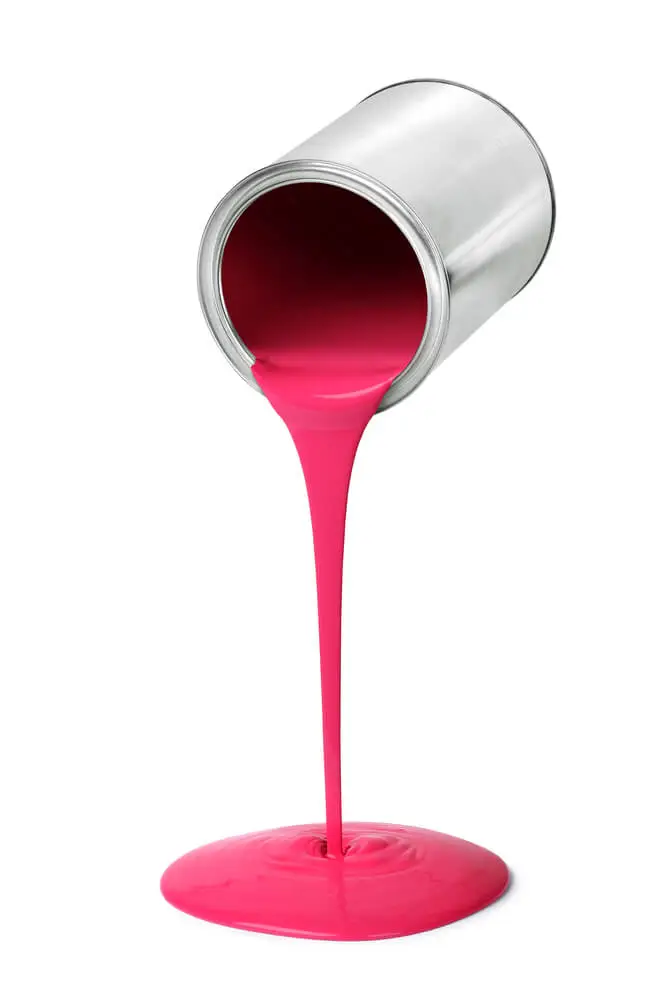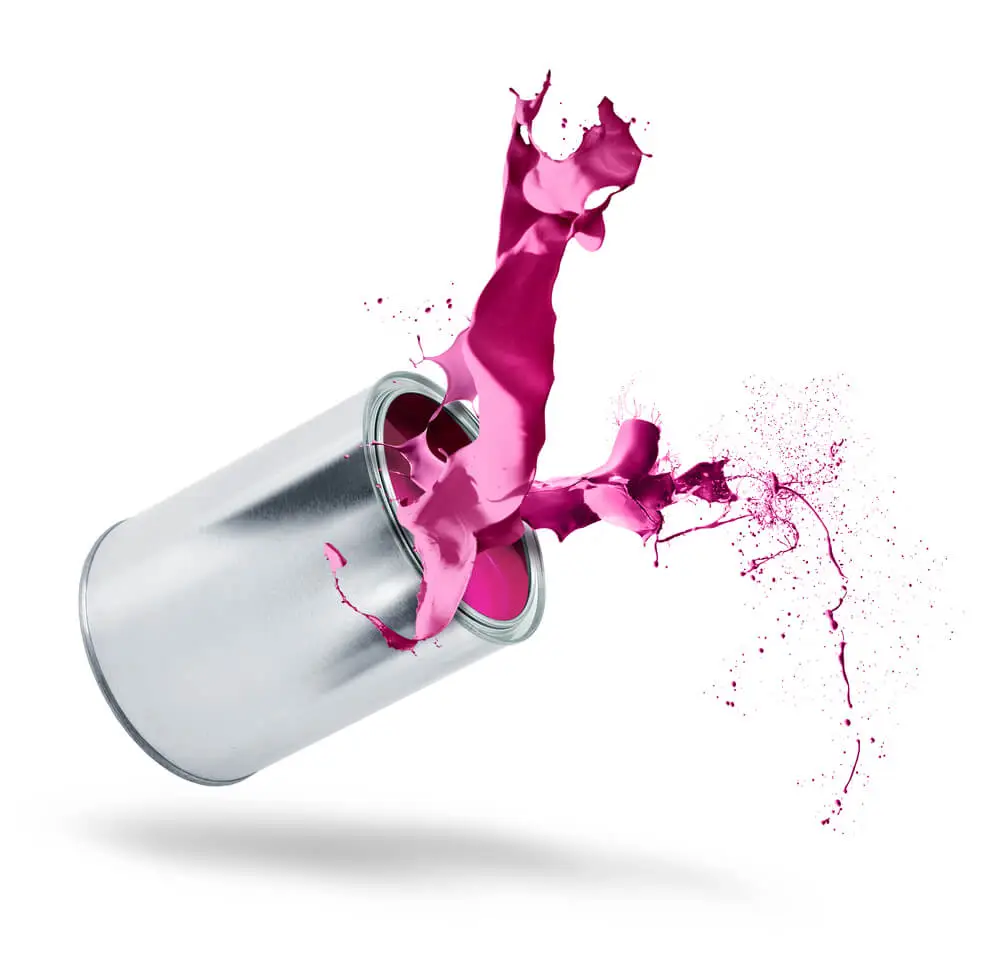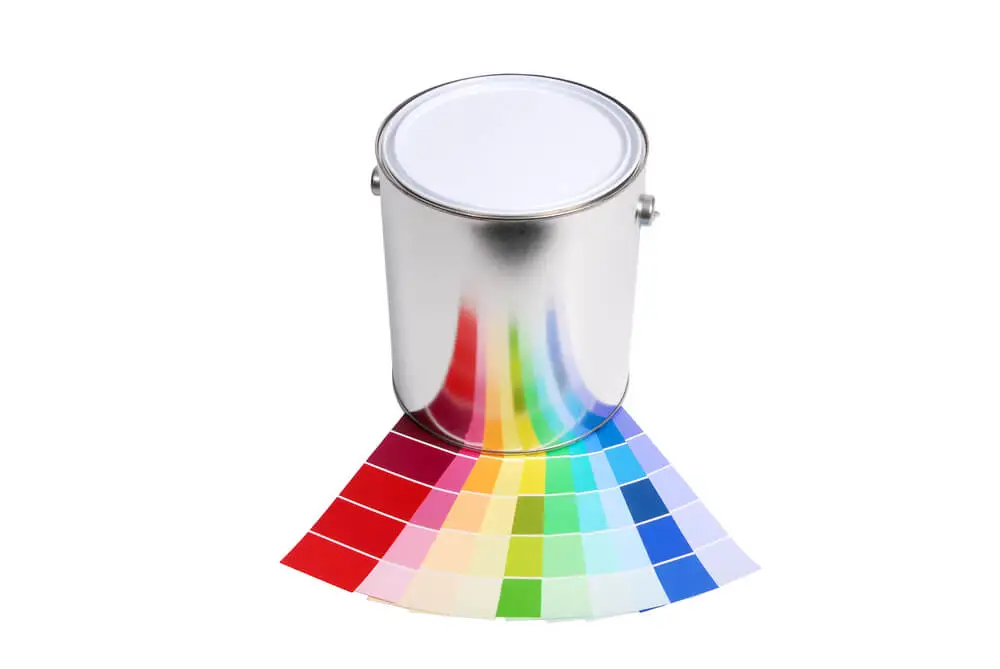Standard Paint Can Sizes, Dimensions and Coverage
You can get paint canisters in different sizes, with the least being quarter-pints and the highest being five-gallon buckets. Consequently, getting the proper amount of paint for your next job will be simple.

Here’s a brief overview of the different paint can sizes and how much they cover if you’re trying to figure out which one will work best for you. Read in detail about Standard Paint Can Sizes, Dimensions, and Coverage to know more about it.
Standard Paint Can Sizes
This question is commonly asked, “what size does paint come in?” There are several different sizes of paint cans. While the paint can size, you can usually find a pint, a quart, and a gallon. Including these, many other colors can sizes are available in the market. Among them, Five-gallon buckets of paint are also available.
Before buying these paint can sizes, you need to make it confirm if one is working for you or not. If you want to buy a color can before the experiment, I recommend you buy a quarter-sized paint. This way, your money won’t be wasted if you need paint for a small section or site.
Half-pints and half-gallons can also be used in intermediate sizes. By selecting the proper combination of paint cans, you can receive the exact amount of paint required to complete a project without overpaying.
Standard Dimensions of Paint Cans
Because of their size, several paint cans have extremely specified dimensions. The main dimensions and sizes are categorized into four numbers based on availability, price, and application usage.
In my experience, Half-pint sizes of cans are commonly available in 2-7/8″ height and 2-7/8″ diameter, the approximate measurements for that size. The main difference between these can sizes and others is only the dimension and the amount of paint available in a specific can.
The giant paint cans have a greater quantity, while the smaller ones have a smaller amount.

The dimensions of a one-pint can are around 3-7/16 in diameter and 3-15/16″ in height. It’s closer to 4-14″ in diameter and 4-7/8″ in height when you get to a quart-sized can.
The dimensions of a one-gallon can are about 6-12″ in diameter and 7-12″ in height. A five-gallon container is generally 12″ in diameter and 14 12″ in height.
How Much Area Is Covered By Each Size Can Of Paint?
Because various paint sizes contain different volumes of paint, different areas that this paint can cover are available. Always buy more paint in quantity than the estimated amount you just calculated for a project. The reason is that most of the time, the relevant paint colors are unavailable, so you can face painting issues later.
Moreover, you may need extra paint to correct mistakes and extra touchups in most circumstances. The paint thickness and the method of your application are also important to know how much area is covered by the paint.
You can calculate the amount of paint you’ll need for your job by knowing how much area you can paint using each size handle. The amount of texture on the surface is also a factor since more roughness takes more paint to cover.
Down in the following sections is a complete detail of how much area a specific paint can size can cover.
1. Half Pint
A half-pint of paint is enough to paint an area of 25 sq. feet. It might also work for modest projects like wall alcoves or niches, provided they don’t cover the full wall. So, if your ceiling is 8 feet high, you can only paint a strip around 3 feet wide using that paint can. A half-pint may paint sufficient for one moderate furniture item or the woodwork in one room.
2. Pint
A pint-size paint cans may cover approximately 50 square feet. You might be able to paint a wall up to 6 feet broad with a pint if you have an 8-foot high ceiling, but you won’t have much margin for mistakes.
Because this size of paint can paint such a small area, it’s best used for touchup work, such as when your paint chips. You may also use this size paint for trim work or other minor jobs. A pint could be enough to cover the ceiling in a small space.

3. Quart
A single quart size of paint will cover approximately 100 square feet. You are beginning to get into the wall painting tasks at this stage. Depending on the size of the area, a pint might be perfect for a bigger wall or ceiling.
Taking on many furniture items with a quart is a possibility. That amount of paint, for example, should be sufficient to cover numerous five-piece dining sets.
4. Half Gallon
You can typically paint an estimated 200 square feet with a half-gallon of paint. You can paint at least two walls; some ceilings and some closets may be sufficient.
When I talk about furniture, moving full bedrooms or dining sets is unlikely to be a problem. You could even have much paint left for future tasks in certain situations.
5. Gallon
Typically, a single gallon of paint can cover around 450 square feet. At this stage, you need to handle full rooms. That’ll cover the bathroom walls, kitchen, laundry room, or home office in most circumstances. However, taking into account the area of the room, you may even be able to paint the ceiling. A gallon of paint would be plenty for a tiny bedroom, but it would likely only cover the walls.

6. 5 Gallon
You can usually cover around 2,050 square feet using a five-gallon paint can. Because the typical room uses two gallons of paint, you could paint two whole rooms using leftover paint.
In some circumstances, this quantity of paint may be sufficient for an open living area. If you want to repaint all of your largest rooms, kitchen, and hall, a 5-gallon paint is enough to buy. However, because home sizes vary, you’ll want to double-check your figures.
7. Spray Paint
Spray paint coverage is mostly determined by the thickness of the paint and the method of its application. Because certain spray paints are thicker than others, they may cover a wider area with less. Spray paint coverage varies depending on whether you paint from far or extremely near the material.

8. 4 ½ Oz
A spray paint of 4 ½ oz. can usually paint 7 square feet. That might include anything as simple as a simple normal sitting chair or extremely basic stools.
If you want to add highlights to many pieces of furniture, this spray paint can size often be a suitable choice.
9. 12 Oz
The spray paint comes in a 12 oz., amount that can paint the area estimate the amount of paint for your project to get all you need in one trip. Here is how to calculate the amount of paint you will need 20 sq feet. Which might accommodate several tiny or medium-sized furniture pieces. Painting numerous dining chairs and a simple, moderately sized serving table may be possible, but depends on its design.
10. 16 Oz
A spray paint of 16 oz. can commonly be used to paint an area of 30 sq feet. That may accommodate one giant piece of furniture or many medium-sized pieces. E.g, you might easily paint some chairs or a medium size dining table.
Paint Size Chart
Sometimes, a chart is the simplest method to analyze the various paint can sizes. It allows you to rapidly compare the possibilities and see how their sizes and measurements differ. Here’s a short table of the different sizes of paint cans, including the volume of paint they hold and their dimensions

Estimating The Amount Of Paint Required
Considering the amount of paint every paint can serve is useful, but it’s just the beginning.
Normal Paint
Estimating paint requirements for standard paint is rather straightforward. The most common method is to divide the number of square feet that need to be covered by the coverage provided by a regular paint can size. In any scenario, divide the area by 400 to determine the gallons of paint you’ll need.
When painting dressers, you must first decide the number of drawers you would like to paint. Double the piece’s height and breadth and remove it from the preceding total if you’re not painting the back. One gallon easily paints approximately 400 square feet. Therefore, it isn’t certain to cover that much space.

Multiply the piece’s height, breadth, and length as a starting reference point. You must add that extra space to your previous sum if you are repainting the drawers. Keep in mind to account for the sides, inside, and any other areas you’d like to paint.
It may be more difficult in the case of furniture or other goods, depending on the piece’s qualities. You’ll need to account for both the primary structure and the exposed shelf surface area with a bookshelf. It’s simple to figure out how many square feet a wall has.
Multiply the measurements of length and height you have measured to get the answer. You multiply the length and the breadth for the ceiling calculations. As a result, to be cautious, you might want to plan on requiring more paint than the calculation implies.
Spray Paint
In general, determining the amount of paint you’ll need for spray paint is similar to estimating the amount of paint you’ll need for normal paint.
The key distinction is that you won’t base your calculations on what one gallon of paint covers. Because you can’t combine spray paint colors, you can start by picking a color and looking at the available sizes. Begin by selecting a color and determining what quantities are available.
Divide the square foot estimate by the coverage quantity supplied that the spray paint canister offers to add some error margin. Then, using the steps outlined above, calculate the area in square feet that you will need to cover.
Calculation Of Paint Required For A 12×12 Room
If you want to paint a 12-foot by 12-foot room, the amount of paint you’ll need is determined by the height of the room and whether you want to paint only the walls or the ceiling.
You’ll need 480 square feet if the ceiling is 10 feet high, and you’re simply going to paint the walls. The 12′ x 12′ x 8′ room requires 528 square feet of wall and ceiling coverage, while the 12′ x 12′ x 10′ room requires 624 square feet. If you want to paint a ceiling that is 8 feet high, you’ll need 384 square feet of wall space.
One gallon of paint could be plenty for a single coat, but you might want to buy more if you’re using a dense solution or expect to require two applications. You might want to grab a one-gallon and a half-gallon can to allow yourself some flexibility.

An extra gallon is recommended for two coats. You’ll need three one-gallon cans for the smaller area if you intend to apply two coats. At least three one-gallon cans and a single half-gallon can are recommended for the taller ones.
You buy a one-gallon can in many scenarios, and a half-gallon can go for the former to manage one complete coat. In other circumstances, a quart or half-gallon additional may be able to maintain a dense solution or the necessity for touchups.
The Amount of Paint a Gallon Offers
A gallon of paint may paint approximately 400 square feet in total. If the initial estimate came close to a full number, you might also want to purchase an additional paint can just in case. Thicker paint is used for a smaller area as compared to thinner paint. Because 400 sq feet is often thought to be the top limit, it’s recommended to evaluate your paint requirements slightly.
The paint thickness, for starters, is important. In certain circumstances, merely rounding off after dividing the calculated value by 400 is sufficient to allow for some mistakes.
However, it may provide superior coverage, reducing the need for subsequent coats. Wall texture is another aspect that influences the area you can paint by using a gallon of paint. As a result, you have a greater surface area to paint than on a smoother wall. Therefore, it may require more paint to complete the job.
Calculation of paint per square foot
When purchasing paint, it’s more customary to estimate how much you’ll need depending on the coverage provided by a given can size. However, because you’re confined to a single paint can size, it’s usually best to utilize the coverage levels associated with that size as a starting point.
A gallon of paint can easily be used to paint approximately 400 square feet, whereas a quart will cover 100 square feet.
If you have the question, “How much paint is required to paint one square foot of surface?” it’s roughly two tablespoons. In a gallon, there are approximately 768 tablespoons. 1.93 teaspoons can cover up to 1.2 square feet, but a gallon may cover around 410 square feet.
It calculates to roughly 9.6 milliliters per square foot if you use the metric system. This calculation technique is not always the best to assess your paint requirements.
Frequently Asked Questions: Paint Can Sizes
Summarizing
In the above-provided information you have seen that paint can size, dimensions and coverage come in a great variety. By following this article, you can accurately estimate the amount of paint required in the painting process of your future project. I hope this article explains everything that is required to know about the paint can dimensions, sizes, and coverage. However, keep in mind that it’s always a good idea to have a little more on hand if you need to touch up something.

